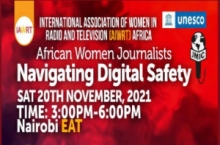IAWRT Africa Chapters Championing Digital Safety
Over 260 women journalists from 11 countries in Africa came together to discuss the true face of online harassment against women journalists.
by Nankwanga Eunice Kasirye
The International Association of Women in Radio and Television (IAWRT) Africa Chapters (Cameroon, Kenya, Tanzania, and Uganda) is building a Continental Action Plan Against Online Harassment of women journalists within and beyond Africa.
The Action Plan build-up kick-started with an engagement of over 260 female journalists from at least 11 countries in Africa and beyond to discuss the true face of online harassment against women journalists.
The development of the Action Plan Against Online Harassment is hinged on the findings of the recently published 2021 UNESCO report, titled “The Chilling: Global trends in online violence against women journalists.
Some of the report findings suggest that online attacks against women journalists have political motives. Political actors, extremist networks, and partisan media as instigators and amplifiers of online violence against women journalists.
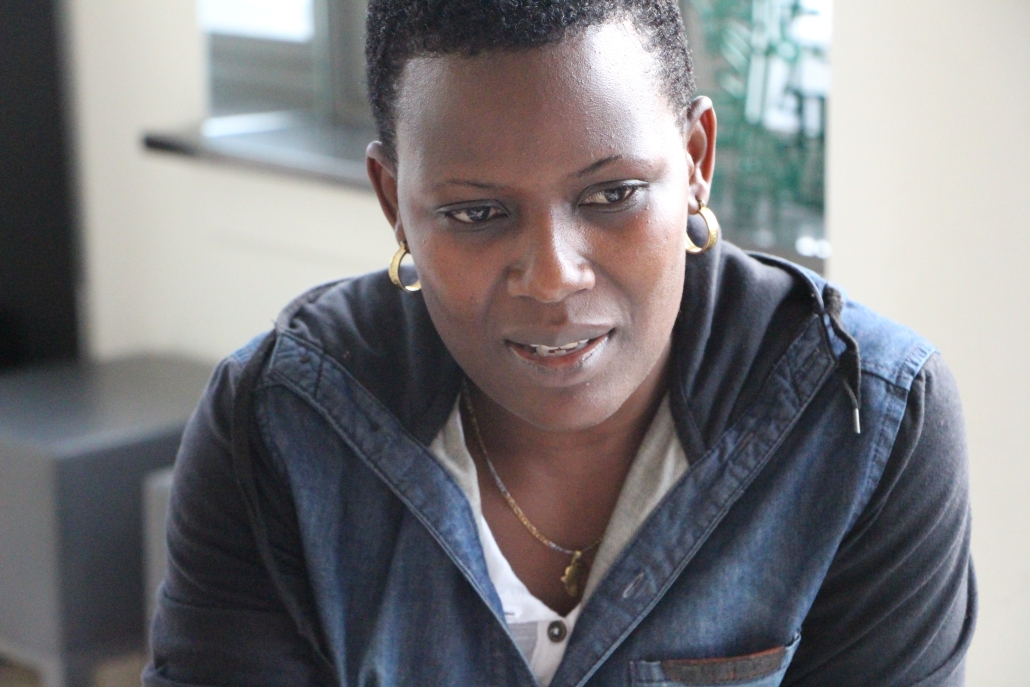
The first grand engagement was held under the theme, African Women Journalists Navigating Digital Safety, under the moderation of IAWRT Secretary Nankwanga Eunice Kasirye, who challenged the participants to be deliberate in identifying the different forms of online harassment, be able to isolate such incidences for pro-active solutions to protect the victims as well as putting to book the perpetrators of harassment.
Harassment of women journalists is a real threat online and offline. With the growth of the usage of online platforms, the perpetrators of offline harassment diversify the vice to project it onto the online spaces. This, therefore, calls for the use of the available and accessible resources as women journalists, as we hold each other’s hand and thrive above the pangs of violence and harassment, Eunice emphasised.
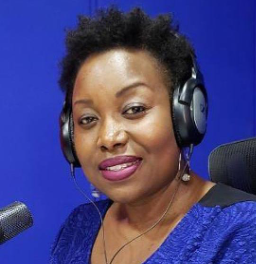
Violet Gonda, the President of the International Association of Women in Radio and Television, encouraged participants to share and learn from each other the different manifestations of violence and harassment both online and offline expressing optimism in devising defensive mechanisms and protection against all forms of harassment through working together with different partners and associates.
Ms. Gonda re-emphasised the fact that International Association of Women in Radio and Television (IAWRT) members in different places around the world have unfortunately fallen victims to different forms of harassment and violence both online and offline, with a number of them being arrested and charged with trumped-up charges such as illegal possession of firearms and authoring of information those in power could not have wished to come out. She says such incidents make the engagement on Navigating Digital safety more than necessary, and it requires everyone’s efforts to propel towards safety for all, both online and offline.
Such scenarios accelerate IAWRT’s need to develop an Action Plan against online harassment as a strategy to arm the association members for resilience against harassers and perpetrators of other forms of violence. Finally, the President recognised and commended the partners, the OsloMet University’s Journalism and Media International Centre (JMIC) and UNESCO, for choosing to advocate for the safety of the media and women journalists alongside IAWRT.
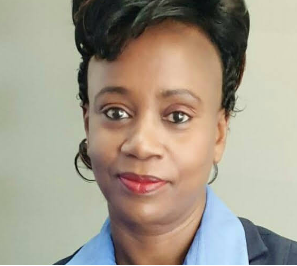
Ms. Lydia Gachungi, the Regional Expert for Safety of Journalists and Media Development at UNESCO Regional Office for Eastern Africa, in her keynote speech, explores the findings of the UNESCO UNESCO’s report on Global Trends in Online Violence Against Women Journalists challenging IAWRT through her networks to ensure the silent oppressed voices are truly represented beyond the boardrooms and efforts stretch up to rural and upcountry stakeholders.
Ms. Gachungi commended the International Association of Women in Radio and Television’s efforts in building and establishing synergies and coalitions for safe spaces for female journalists. She says the associations’ bold steps in keeping the morale and momentum in advocating for safe spaces despite the challenges can’t be ignored.
According to Ms. Gachungi, harassment is not limited to female journalists only but also dribbles to the advocators of the safety of the media generally through freedom of expression, and the harassers use all the available spaces to threaten whoever they would mark as their next victim.
She highlighted the UNESCO report findings that require attention if digital spaces must be made safe. These include the notorious sources of online harassment, including anonymous contacts, disinformation, and hate speech.
Accordingly, statistics indicate that 57% of cases of harassment are associated with anonymous contacts, 15%, colleagues, 14%, gov’t, 14%, politicians, political parties, live/media organisations, and networks through competition.
She elaborates that perpetrators of online harassment sometimes target the victim’s family members, bystanders, and friends of the victims and spill into physical attacks and frontline journalism, especially the women journalists who sit at the epicenter of threats. The harassment or any other form of violence could start online but end up physically since it is a global problem even in the countries relatively at peace are not exempted from the vice.
Ms. Gachungi stressed that journalists’ safety improves access to information and freedom of expression, which informs UNESCO’s decision to promote the safety of journalists as one of the core principles of its portfolio.
Ms. Gachungi challenged the participants to make an effective assessment of the safety of women journalists during policy discussions that influence online spaces, at all critical levels, within and outside the boardrooms underscoring the involvement of upcountry journalists.
Assessment and evaluation of policy formulations, enabling focused engagements in online discourses on journalists’ safety, help determine the elevation and amplification of the voice of the voiceless, Ms. Gachungi emphasised.
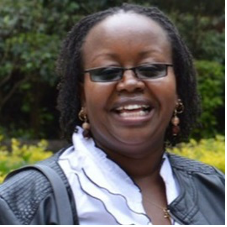
Grace Githiaga, an online safety and tools expert from IAWRT Kenya, challenges women journalists to take personal responsibility and caution while using online spaces. She said that taking time to educate oneself on the professional etiquettes of online space usage is one way to build personal safety measures and mechanisms while exploring online spaces.
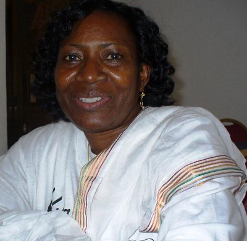
Rose Mwalimu, a senior IAWRT member also an expert on Media and Gender Issues, explored the gravity of violence offline that eventually manifests in the digital online spaces.
She highlights that gender-based violence, in particular, is a major human rights problem because it is linked with cultural norms and structural inequalities. Therefore, addressing online violence and harassment requires the active and careful participation of state and non-state actors involved in Internet governance.
Mwendwa Kivuva, a google safety tools trainer, underscored the need for digital hygiene in which personal details are protected, such as passwords, authentication, and footprints, among several personal trail details while online.
Gloria Meiseyeki from Tanzania Chapter, Patience Wirngo Ntubu from the IAWRT Cameroon chapter, Auma Agnes, and Akello Easter from Uganda Chapter shared their personal experience with online and offline violence and harassment while in their line of duty.
The engagement attracted a pool of participants from Uganda, Kenya, Tanzania, Cameroon, Ethiopia, Zimbabwe, Ghana, Nigeria, South Africa, Mozambique, and the USA.

